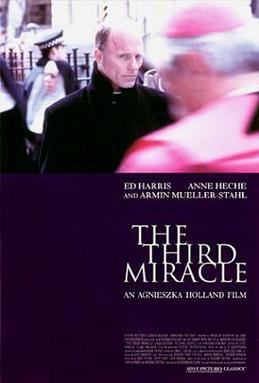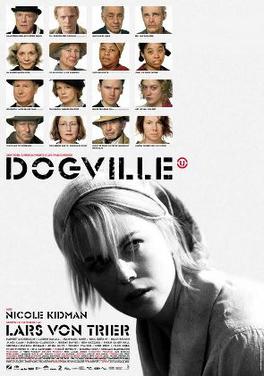 It's been a month since I posted on this blog. During that time I've been moving (from Berkeley back to L.A.) and running an emerging church chapel in the midst of the exhibition hall at the General Convention of the Episcopal Church.
It's been a month since I posted on this blog. During that time I've been moving (from Berkeley back to L.A.) and running an emerging church chapel in the midst of the exhibition hall at the General Convention of the Episcopal Church.You may have seen news reports about the Episcopal Church's controversial legislation regarding same-sex marriage rites and gay bishops. But one thing you might not have heard about is our new list of "saints". The Episcopal Church has always had an unusual understanding of sainthood. The movie The Third Miracle (Holland 1999) is a meditation on sainthood. When someone asks the main character (a priest played by Ed Harris) "What is a saint anyway?", he answers "A saint is a person who is with God in heaven. If you pray to that person and your prayers are answered that means that person has a special connection with God." So the Catholic Church looks for miracles to prove that a person is in heaven and has a special relationship with God. The Episcopal Church, however, is a Protestant church that rejects priestly mediation and hierarchy. We think all Christians have a direct connection to God and can be sure they are going to heaven.
To be fair to The Third Miracle, this might be the point of the film. The representative of the Church hierarchy says "We live in a fallen world. Martyrdom, the great act of faith, seems impossible. Therefore, acts of simple goodness, a soup kitchen, kindness to the poor, have come to seem worthy of saint. But true sainthood is of another world. ... A saint loves God beyond the ordinary human power to love God." But the film presents him as unreliable and hypocritical, suggesting that there can be such a thing as an ordinary saint.
In any event, the Episcopal Church recognizes ordinary saints. We remember people for their contribution to the life of the Church, even if they did not demonstrate any "heroic virtue". In other words, most of our saints are along the lines of what Roman Catholics call "Doctors of the Church".
But unlike the Catholic "doctors", we do not limit our saints to theologians. We recognize artists and scientists as saints, too. For example, poets George Herbert and John Donne were already saints. At the last convention, we added C.S. Lewis. This year we added writers John Bunyan and G.K. Chesterton, composers Bach, Handel, Purcell, William Byrd, and Thomas Tallis, hymn writers Fanny Crosby and Isaac Watts, artists Albrecht Durer, Matthias Guenewald, and Andrei Rublev, and scientists Copernicus and Kepler.
Moreover, if you didn't notice from the above list, the Episcopal Church is unlike most churches in that we recognize saints outside our own tradition. For example, joining the likes of Martin Luther and Dietrich Bonheoffer, this year we added John Calvin, Karl Barth, Thomas Merton, and John of the Cross.
Finally, we let in philosophers. Joining Augustine, Aquinas, Berkeley, and Joseph Butler, we now have Soren Kierkegaard.
St. Clive? (as in Clive Staples Lewis) St. Kierkegaard? These are saints who inspire me to heroic virtue!
 In the interview, Bouldin expresses a viewpoint similar to
In the interview, Bouldin expresses a viewpoint similar to 



 I was walking down the street the other day and saw someone pushing a
I was walking down the street the other day and saw someone pushing a 








